This yearlong endeavor looks at how four farmers are evaluating technology and agronomic information that can boost the productivity of their operations.
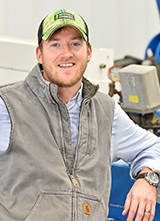
What a difference a month makes, the crops have been flying out of the fields here in North Central Iowa. We were able to finish our soybean crop a few weeks ago and initially yields look very good! As we finished beans, we did struggle with the moisture a bit as it was a little higher than we would have wanted at roughly 14.5% but were able to get them done and put away in the bin. Corn has progressed nicely, as we are down to our last 1/3 of our corn acres. Yields have been surprising as test weights were significantly higher than we thought so that is adding to the yield. Moisture for the most part has leveled off between 15% - 18%% depending on hybrid maturity so for a lot of the fields left we should be able to go straight to the bin or with very little drying. Initially it appears that my fungicide trials may have been beneficial. However; once we've finished this fall I will be able to analyze them in greater detail. We have even been able to start some manure applications and fall tillage as my brother-in-law has kept the chisel running while we've been harvesting, which has been great, as I'm sure that will be our next hurdle.
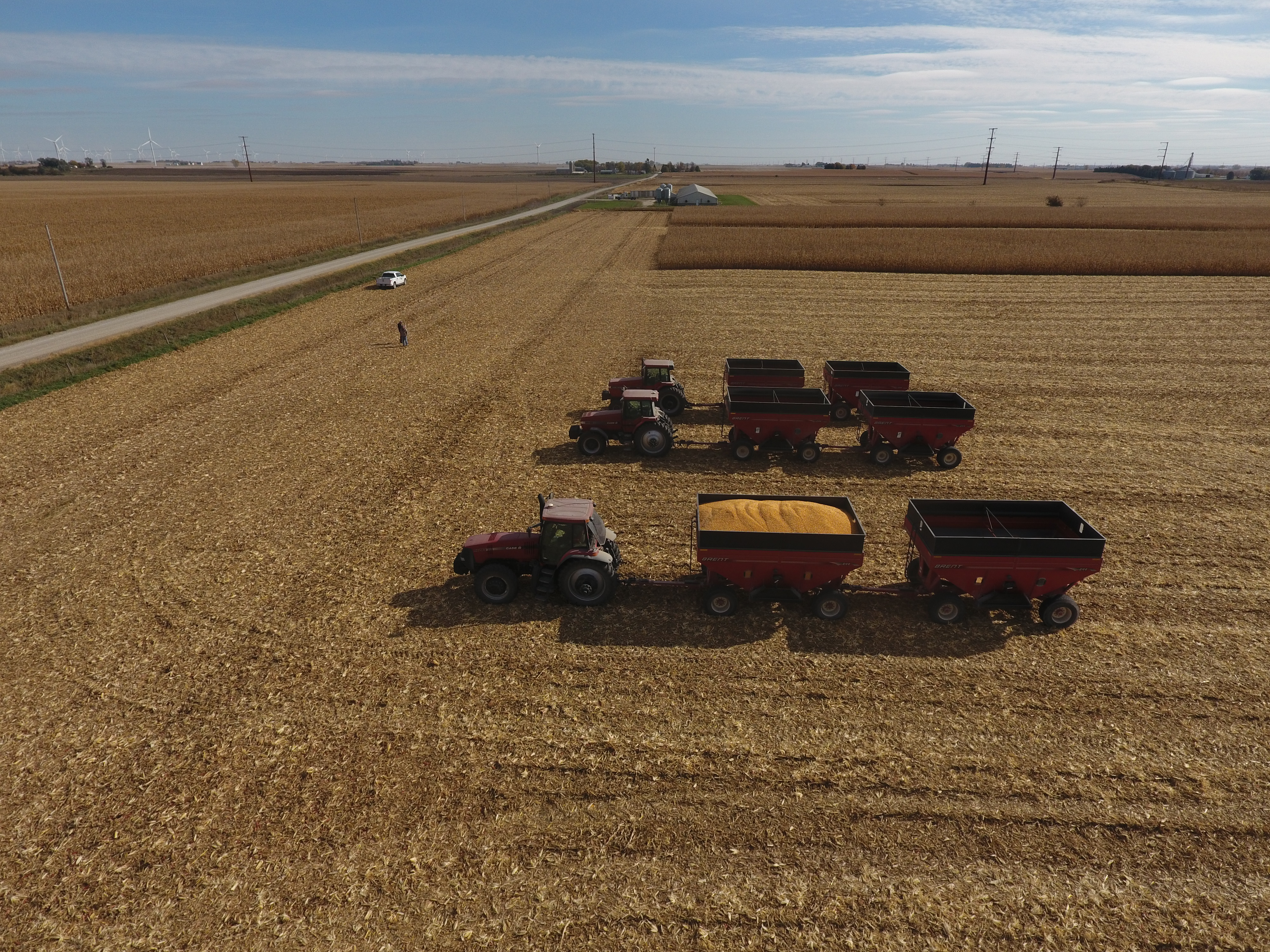 |
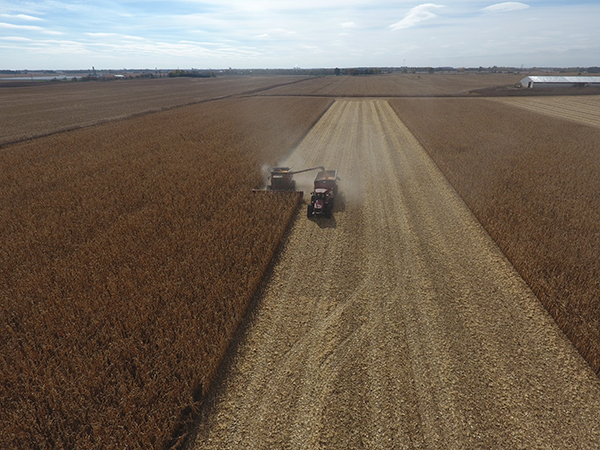 |
Rain again has showed up late last night, which is allowing us to get caught up on a few equipment maintenance items as well as some overdue office work. As we move through the fall season, dad and I continue to work with our customers on shoring up their 2017 seed orders and any soil sampling that may need to be done this fall or next spring for next year's crops. Late fall is also a time when I solidify my plans for the next year so I am once again analyzing my breakevens to see where they are going to shake out so I can more accurately put a plan in place for 2017.
Be safe and enjoy the final push of harvest!!
Landon
Harvest has begun!! With perfect weather the first part of the week we were able to sneak out in the fields and begin a bit of the corn harvest. It's always nice to get out early and prove out the equipment. We lost most of the day Tuesday to an unforeseen gearbox issue on the chopping head but were back up and running late Tuesday afternoon and actually finished our first field on Wednesday. Nice to have the first one behind us!
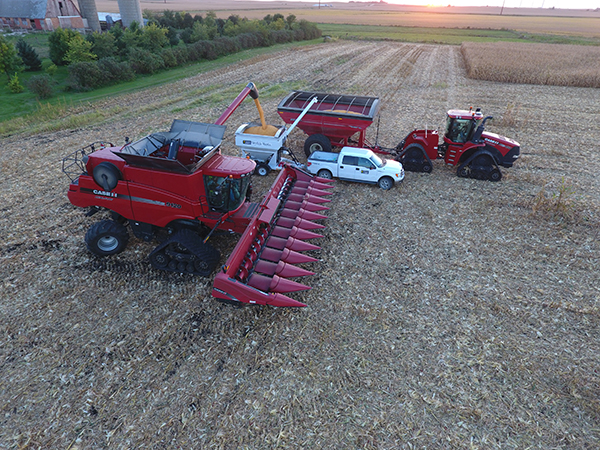 |
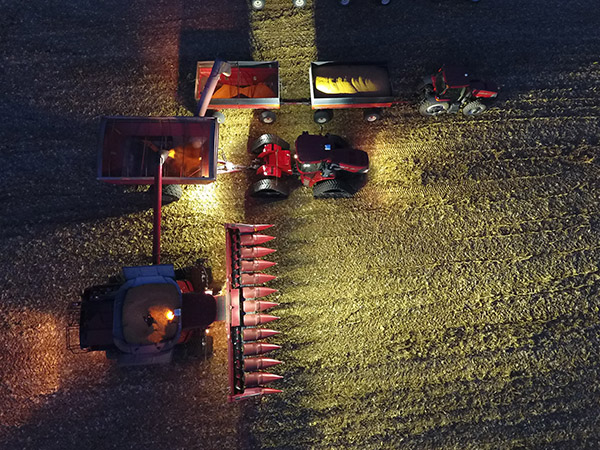 |
The rain showed up Wednesday night and looks like it will be here for a few days, so harvest is now at a momentary pause. I was able to grab a couple videos before we were rained out, and hope to grab more as fall continues.
Have a safe and enjoyable harvest !
Landon
August is here, and so maybe is the calm before the storm! Things typically seem to get a little slower in August. All the fields have had their spraying treatments of herbicides, insecticides and fungicides. Outside of scouting there really isn't much to do in the fields but wait and see how our plans transform into bushels via the seat of the combine in a few short weeks.
We recently added a new tool to assist in scouting fields—a drone. The past few weeks I've spent some time learning to fly it and was able to get some videos to include with this month's blog. I'm still a rookie so no judgment! The ease of use is awesome and the video/picture quality is amazing. I certainly think it will be a great addition to the scouting we do on our farm and for our customers. Plus, it's just pretty cool!
The fields continue to progress, and in some places we're starting to see some signs of changing to harvest. We did see a few other diseases show up in corn since my last blog, but in very isolated conditions. All in all both corn and soybeans have been very healthy this growing season.
The biggest issue we've seen this year is the wet spots in fields. They're showing up a little more prevalent over the last few weeks. Also there is some tip–back going on sporadically, too, but I've heard it's a lot worse around the state than what we're experiencing. Once again, we'll have a front row seat from the cab of the combine shortly!
As we approach harvest, now is the time when we go through all of the equipment and complete any needed prep work. We are down to replacing the sickle sections on the bean head, and test firing the dryer/leg system. I feel like we have prepared well for fall and I'm actually looking forward to getting in sooner than later, which as previously mentioned won't be too far off!
August also allows us to begin to focus on next year's plans. We are putting together seed orders, working on fertilizer & chemical programs, and general cash flow/break even analysis. It often seems like it's too early to begin that process of deciding what next year's plan will be when we haven't even begun to harvest this year's crop. However, in my experience the sooner you can make a plan of action the easier it is to execute.
The primary area of focus is seed orders for both our acres and those of our customers in an attempt to hone in on what traits, hybrids and price points they may require. Again, it seems crazy to order seed when you have no performance data from this year. Yet, in order to reserve the hybrids that go quickly, it's important to act now rather than after fall! How's that for my sales pitch?
Enjoy the rest of your August. Hopefully next time I blog we'll be in the field.
July, officially the dog days of summer….but unlike the baseball narrative suggests we are far from the sluggish, mundane, same day in and out routine. The last half of July has brought a change in our weather pattern. We are now experiencing those 95–98 degree days with very high humidity. Thankfully I feel like most of the pollination is completed so the corn shouldn't have been too stressed during such a critical time of development.
As this streak of hotter, more humid weather hits we continue to scout our customers and our own fields to check for any insect and disease pressures that need attention. Last year at this time we saw an increase in the corn diseases, particularly that of Northern Corn Leaf Blight. I will say to this point most of the crops have held up to any disease pressure extremely well, with the exception of Gray Leaf Spot on corn, although it is definitely not widespread.
This upcoming week we plan to begin our aerial application of fungicide, as the corn is mostly in the brown silk stage. As previously mentioned, I had a few trials on the books for my corn crop this year. I went ahead and did apply some V5 fungicide per my "normal" corn plan but also am going to do some fields at tassel. I am anxious to review the data of which fungicide program ended up being a success but as with all agronomic decisions, only time will tell! While corn is being aerial applied we will begin ground applications on soybeans. On some soybean fields we plan to include our insecticide product as well, which usually we would be hesitant in doing but seeing as the crops in our area seem to be 1–1.5 weeks ahead of "typical" years we feel that the residual will be enough to get us through the remainder of our season.
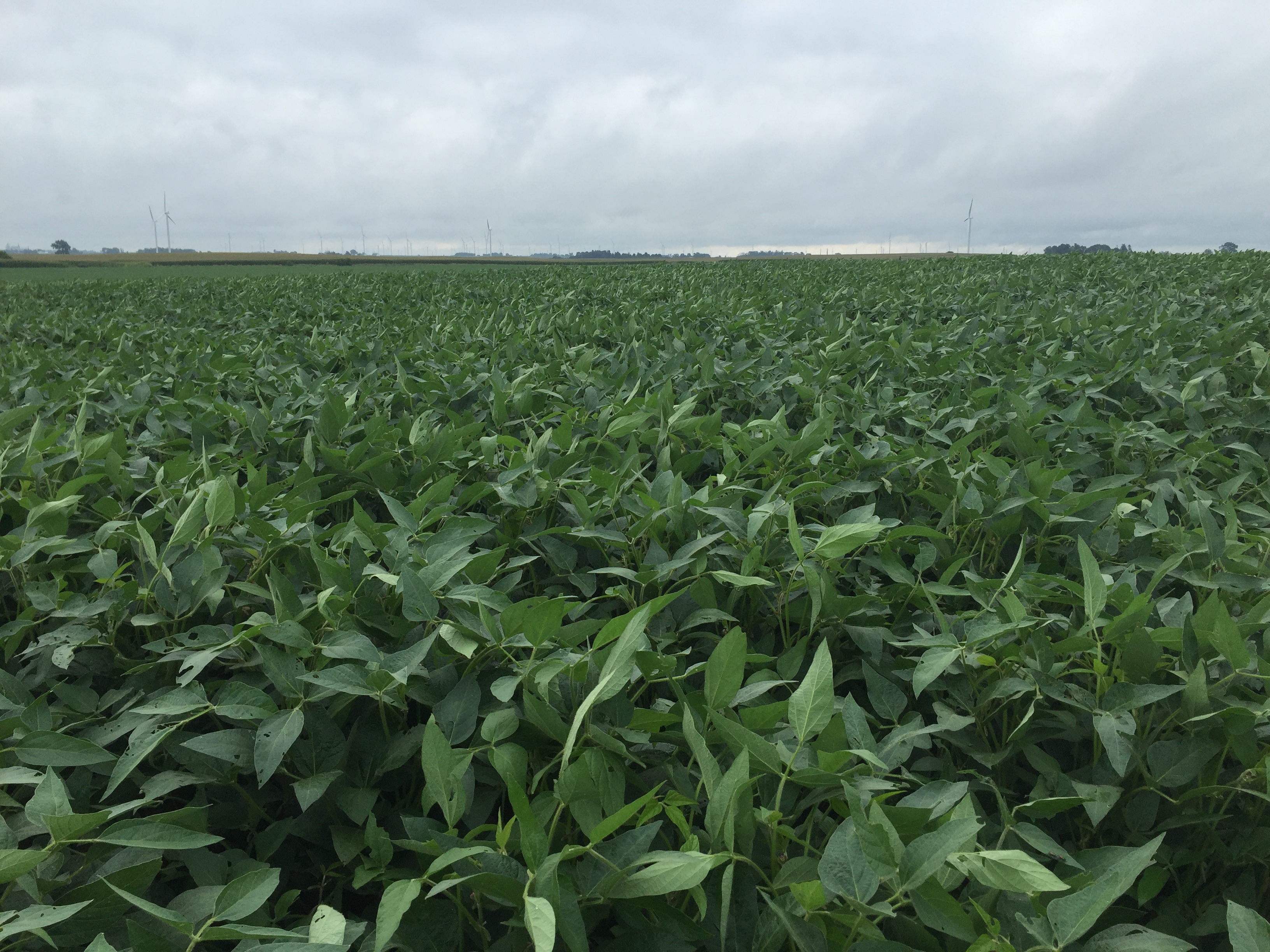 |
As with any year of crop farming, the greatest impact and least controllable variable threw us a curve ball a few weeks back!. Mother Nature! My wife and I were traveling in WI when we saw that early Sunday morning a severe storm came through with rumored to be 80+ mph winds. I was anxious to get home and conduct a crop tour, but thankfully we weathered the wind relatively unscathed. There were a few locations where the outside row or two were tangled on the North or West side of the fields, but soon after the crop seemed to bounce back for the most part. Dodged another one!
August seems to be the month where we as seed dealers transition from looking at '16 crop to talking about '17 seed lineups and sales programs. My dad and I rep for both Wyffels Hybrids and Latham Hi–Tech Seeds, and both have various meetings to learn new products in the classroom and the field coming up in the next month. These meeting aid in educating ourselves so that we may meet the needs of our customers in the coming season.
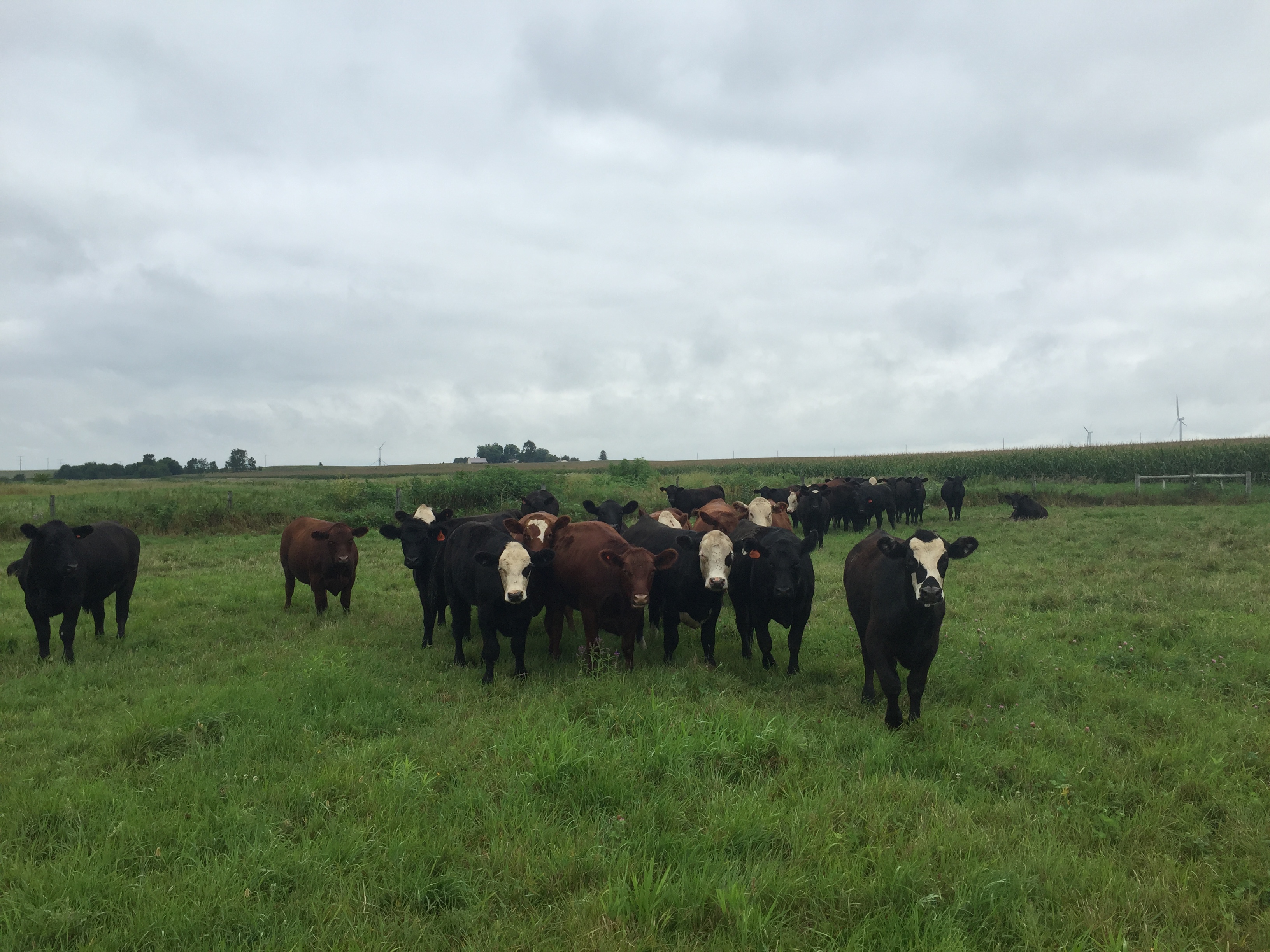 |
Real quick livestock update, we recently sold the last of our fat cattle once we filled our friends and family's freezers. So we are now down to 30 head running the pasture, which are doing great and continue to put on nice gain. Only other critter running around our place is the ever curious stray farm kitten, Burt Reynolds.
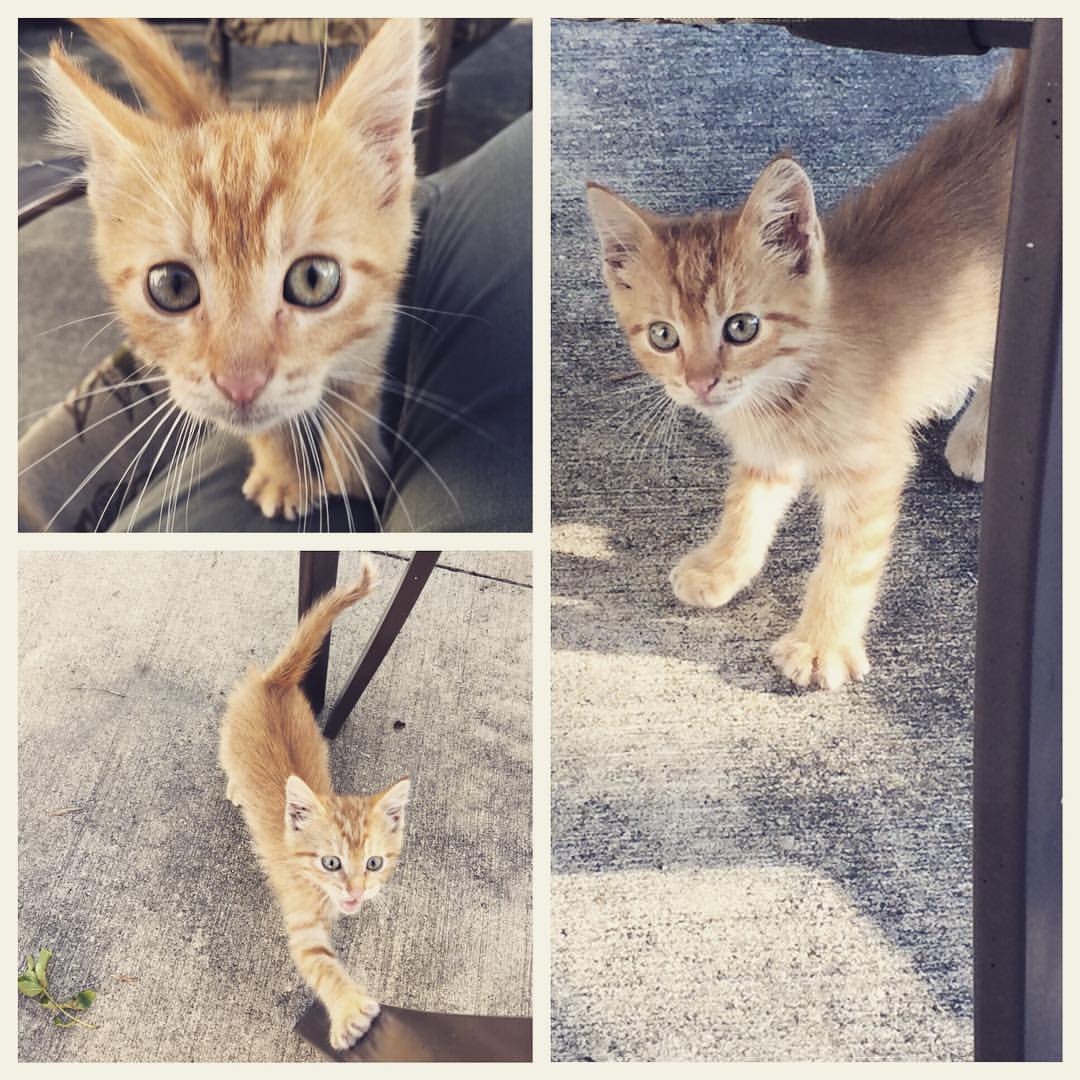 |
Enjoy the rest of summer and wish you the best as we prep for fall!!
Landon
June has been quite the month to kick–start our crops. The past few weeks in particular, we have seen plenty of sun, heat and nice, timely rains—all of which have made the corn growth impressive. Just a few weeks ago some corn–on–corn fields were struggling to get going and were looking pretty rough, but what a difference rain and heat can make!
Last week we finished our second pass for corn spraying, which was a little bit of a challenge as we were dodging rainfall. I was really pleased with some of the new programs we put down for preemergence herbicides as the weed pressure was minimal, so they are shaping up as good alternatives. However, our existing program is working great on our personal farm and client farms, too! So with finishing corn spraying we started focusing on the second pass in bean fields, which we hope to finish this week. But again we are in a momentary pause after a ¾" rain on last Tuesday night, which in all honesty was nice to receive. I feel quite fortunate in our area as we have been getting timely rains, and you don't have to go very far to see shortages or, in some cases, too much moisture.
Outside of spraying, we have just focused on cleaning up a few areas that might have needed a little shot of side dressing NH3, or spreading of fertilizer. We also continue to scout our fields and those of our clients. There are some rumors that with temps in the low 80s, shots of moisture, and spores that hung around from last year that Northern Corn Leaf Blight (NCLB) has been spotted here and there. We will continue to watch for this disease and treat/advise as appropriate. I am trying a couple of different tactics for fungicide use this year, but I went ahead on a lot of my acres and applied a V5 application, so we'll see how that compares with other fields in warding off NCLB.
I actually did get to pull the planter back out this week too, as we had a large 4½" rain three weeks ago!! At the time it seemed like it was going to cause some issues, but in the end it wasn't too bad and we only had to replant 6.5 acres of beans. Finally we've been hauling a little corn and soybeans as of late, which seems like a great idea at the time until you have to clean bins out on days in the mid– to upper 90s with high humidity, ha! But then again, that's just part of it.
I hope you all have a great 4th of July. Please remember to appreciate the life and country in which you live, while showing gratefulness to the people who made those sacrifices that granted us independence!Until next month,
Landon
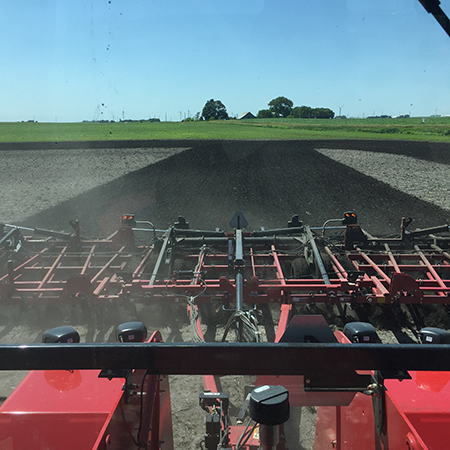 |
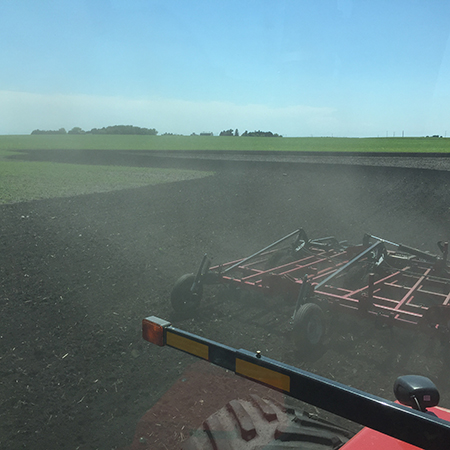 |
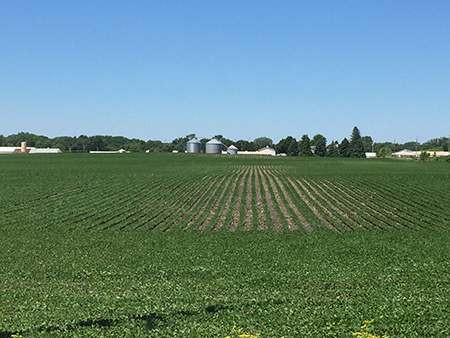 |
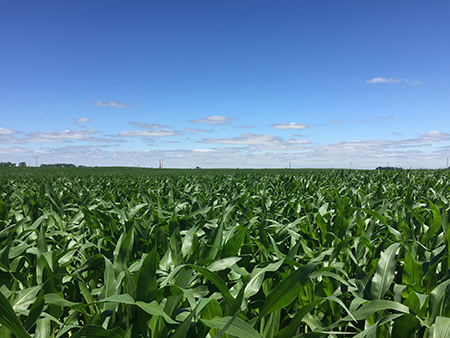 |
Well it's official, spring field work has begun! The weather in our area has been excellent the past few weeks and a lot has transpired. With seed corn deliveries nearly complete and chemical deliveries progressing, it seems like everyone is ramping up and has the same thought: let's get to the field!
We started off our field work with anhydrous ammonia application later in the week of 4/4 and were able to finish in a matter of days. This was excellent, given that we had the majority of our corn acres to apply and were extremely pleased with how well the ground was working up. We did notice as we were finishing that the topsoil was starting to get a little dry. So dare I say it, a shot of rain might not hurt anyone?! I'll come back to that later.
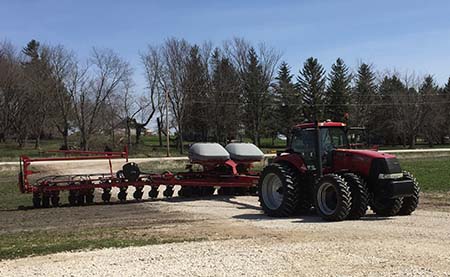 |
With the temps steadying and ground conditions excellent the corn planters started to roll out. It's always great to get out and get those first couple of fields done and execute the program you've planned all year for. We had a couple of great days of planting and were able to get in over a third of our corn acres. And then it happened, the aforementioned rain. With only 2 tenths to 3 tenths of rain with decent temperatures and wind that wouldn't quit we didn't expect much of a delay, so we loaded up and headed to the field. That's when a producer's least–favorite thing happened, an issue with the planter tractor so back to the shop we go. I'm not sure about the rest of you but when a beautiful day to plant is upon you and you're stuck fixing a hydraulic leak on a tractor, the word patience is a virtue. Thankfully, we were able to locate the issue quickly and not lose too much time in the process of getting it fixed so we managed to still have a decent day of planting.
Since then we've been able to sneak out here and there and get some more corn planted between shots of rain. But yesterday we got a strong half of an inch so we'll be out for a couple days until the fields are fit again to hit it hard.
I was reading this past week that both the U.S. and Iowa had 13% of the corn planted. For the U.S. this breaks the five–year average and for Iowa that puts us twice as far as last year at this time and four times the five–year average of 3%. I also heard that currently in Iowa we are planting 1 million acres a day, so things will go quickly here once the fields are ready. All things considered, maybe a shot of rain to alleviate that dry topsoil and give us a break to catch our breath isn't a bad thing after all.
Hope you all have a safe and enjoyable Spring '16!
Earlier this month we were able to travel with a great group to New Orleans to attend the 2016 Commodity Classic with SciMax Solutions. This trip was a great opportunity to break–up the monotony of a Midwest winter with good friends but also investigate the new innovations in agriculture. We spent five days in NOLA with producers and folks in the industry from our surrounding area and were able to sightsee around the city and spend time exploring the trade show exhibits. Like at any farming trade show, new equipment and technologies were on display for application in our operations. Although the new tech and equipment are great, the biggest takeaway from trips like this for me is networking with other producers. This is an innovative group, and someone always has a new idea that is sure to spur conversation.
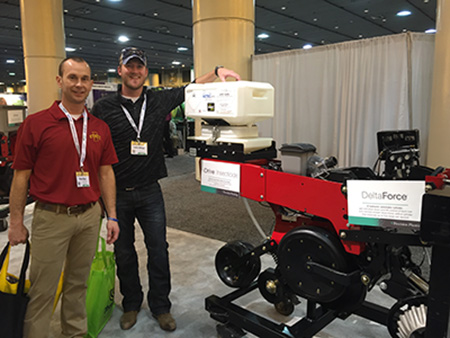 |
| Farmer Landon Aldinger (right) and Peter Bixel, SciMax Solutions, were part of this year's record attendance of 9,700–plus participants at the Commodity Classic. |
Since returning home from New Orleans we've been hit with a wave of beautiful weather. This means ready the equipment, which isn't limited to just steel and tires anymore. As we continue to expand our capacities of precision ag on our operation, that in turn increases the time needed to write variable–rate applications, update monitors, and properly track our proposed trials for the year. Like in years past, we have some new trials that I am pretty excited about—fungicide trials, chemical alternatives, and expanding variable–rate nitrogen applications. On the mechanical end of the spectrum, we have been pulling various pieces of equipment out and giving them the once over. That includes changing sweeps on the field cultivator, servicing tractors, and this week pulling the planter out.
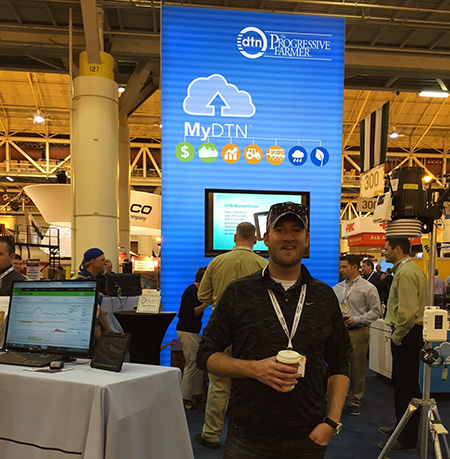 |
| Landon Aldinger checks out the DTN/The Progressive Farmer exhibit during the 2016 Commodity Classic in New Orleans. |
Finally the last piece of our kick off into spring is completing the sales/consulting side of our business. This includes any chemicals or seed sales that may arise, lining up crop scouting acres, and any soil sampling that may need to be done. This week we actually received the last of our seed into our location and are now working on getting it into our customer's hands. Once customers start to pick up products, it suddenly feels like game on! All of this preparation is to ensure that we put our best foot forward as we roll out this crop year.
Good luck and have a safe spring!
Landon
I get asked all the time from my non–farmer friends. "You must love winter, because there isn't anything to do on the farm, right?" Well, we all know that statement cannot be more untrue. Over the winter months I spend a large amount of my time reviewing data from the previous year and tweaking fertilizer rates. Yes, it IS as monotonous as it sounds, but it's undoubtedly necessary! If we don't measure quantitative data (not just yield maps), how can I possibly do something different, and subsequently better, next year? Isn't there a saying about insanity—doing the same thing over and over again and expecting different results?
When analyzing yield maps, I find myself obsessing over the poorer performing areas of a field. I become much more captivated about those low–yielding areas than the eye–popping, high–performance stretches that are so fun to harvest and watch with the yield monitor. It is gratifying to literally see the fruits of our labor, watching the yield monitor in those higher–yielding acres. But I must dissect the embarrassing, not so good—and hopefully far away from the road—low–yielding parts of our fields.
So, for us, how do we get the most accurate data? On our farm, we pulled over 700 soil samples this past fall alone. Then we added in planting and spraying data, hybrid test plots, and other strip trials of nutrients and fungicides. It is a lot to process, but a lot can be gained from combing through data.
For example, this past year we did a fungicide strip test on an irrigated field of corn. Quite frankly, I didn't think we would see enough yield increase to justify the application. Adding to my skepticism, we had done some work with fungicides in the past without much response. I, however, was dead wrong; we did see a response. Our data illustrated a positive response with BASF's Priaxor. The average yield response was +20.7 bushels per acre. Needless to say, we will continue increasing our use of this product, while not forgetting to verify and measure its response every year.
So to my non–farmer friends, that is just part of what a farmer does in the winter; plus there is that machinery maintenance thing, too…